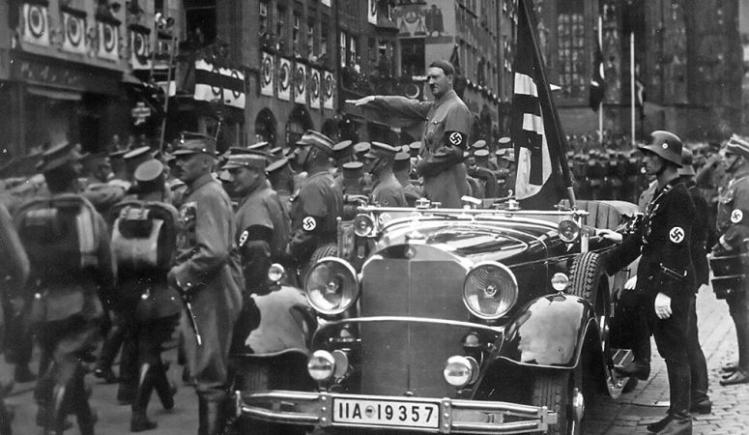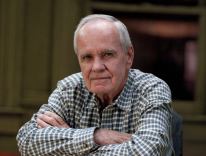
By July 1944 most of the Jews living in German-controlled Europe had been killed. Some survived as slave laborers (many of them in the factories run by German firms at Auschwitz), in hiding (Anne Frank and her family would be arrested in early August), or in isolated communities scattered throughout the Nazi empire. Among the latter was the ancient Jewish community on Kos, a Greek island a mile off the Turkish coast. Although the majority of Kos’s Jews had fled to the mainland, around a hundred remained. On July 24, they were rounded up, loaded onto barges, brought to Athens, and from there transported to Auschwitz—along the way, their captors stopped at the neighboring island of Leros, whose one Jewish resident was added to the group. Many of these people died en route, most of the rest perished soon after they finally got to the camp in mid-August. As so often when we are confronted with scenes from these terrible times, the story of Kos’s Jews challenges our capacity to imagine and understand. What must it have been like to endure that long and painful journey to the gas chambers? And what combination of ideological fervor, racial hatred, and demented devotion to duty led those German officials to spend so much time and energy on the destruction of a few dozen people, most of them elderly and infirm, who had been living in harmless obscurity on the far fringes of the Nazis’ rapidly shrinking domain?
Although the fate of Europe’s Jews has been the subject of intense scholarly investigation for more than half a century, the three works reviewed here demonstrate that there are still new and important things to say about the twentieth century’s emblematic tragedy. In quite different ways, these books deepen our understanding of the Holocaust by setting it in a broad historical context, showing both its centrality and its connection to other dimensions of the Nazi project.
As Nikolaus Wachsmann makes clear in his massive, comprehensive, and altogether compelling new book, A History of the Nazi Concentration Camp (Farrar, Straus & Giroux, $40, 865 pp.) the initial purpose of the concentration camps was political terror, not mass murder. In the months immediately following Hitler’s appointment as the German Republic’s chancellor in January 1933, he preserved the trappings of legality by holding elections, passing legislation, and retaining or co-opting a number of existing institutions. Behind this legal façade the Nazis carried out a reign of terror in which tens of thousands of the regime’s opponents, most of them Social Democrats or Communists, were incarcerated in hastily constructed prison camps where they were humiliated, tortured, and sometimes murdered. This period of intense repression did not last long, and most of those arrested were eventually released, but it had three significant, lasting results: first, it permanently weakened any opposition to the regime, especially from the once formidable ranks of the labor movement; second, it forged a cadre of men with an appetite and aptitude for violence and cruelty who would continue to operate the Nazis’ terror apparatus; and, finally, it taught Germans to avert their gaze (sometimes literally) from other people’s suffering. Like the many atrocities that would be committed by the Nazis over the next twelve years, the concentration camps were hidden in plain sight, threateningly sinister because they were shrouded in secrecy, politically effective precisely because everyone knew they were there.
From the beginning the camps were deadly places; in 1941 they became the sites of mass extermination. The first victims were Germans who were judged unfit to live because they were chronically ill, mentally handicapped, or allegedly “habitual” criminals. From lethal eugenics it was a short path to racial murder, initially of Polish prisoners of war and then, systematically and comprehensively, of every Jewish man, woman, and child whom the Germans and their allies could apprehend. Wachsmann estimates that between 1933 and 1945, 2.3 million people ended up in a concentration camp, where over 1.7 million of them perished.
In our historical image of the Holocaust, Auschwitz has a special place. And for good reason: a million Jews died there, more than at any other single location. But, as Wachsmann points out, there is something paradoxical about Auschwitz’s exemplary status. In the first place, most of the Nazis’ victims did not die in a concentration camp, but were shot, intentionally starved to death, or gassed in one of the killing centers that had been established with the singular purpose of murdering Jews. Moreover, Auschwitz was not a typical camp; it was both killing center and an industrial complex where thousands of slave laborers worked to produce materials for the German war effort. Auschwitz’s historical prominence comes in part from this dual function: we know what happened there because a few of those who worked in its factories survived to tell us about it. There are no memoirs describing a death camp like Treblinka because no one lived to write them.
IF, AS WACHSMANN argues, “the concentration camps embodied the spirit of Nazism like no other institution in the Third Reich,” then the activity that best represented Nazism’s spirit was waging war. The kind of war the Nazis fought, a total war against entire societies, revealed the movement’s essential purpose and aspirations, its hideous strength and ultimately fatal weakness. There are scores of excellent studies of Germany between 1939 and 1945, but none quite like Nicholas Stargardt’s truly remarkable book. Better than any other work I know, The German War (Basic Books, $35, 704 pp.) tells us what the war meant for ordinary Germans, both at home and at the front. By skillfully weaving together a collection of brilliantly rendered individual portraits with an astute analysis of institutional structures, he shows us why and how German soldiers and civilians fought, the destructive fury they inflicted on others, and the devastating losses they themselves endured. At the core of Stargardt’s story is the perplexing fact that, alone among the war’s losers, the Germans kept fighting until they could fight no more, giving up only when Soviet troops reached the underground bunker in which Hitler had taken refuge and, at the very end, killed himself. With great subtlety and skill, Stargardt uncovers the complex combination of coercion and compliance that sustained the German war which, he argues, retained its legitimacy even after many people’s commitment to the regime had begun to ebb. Germans kept fighting because, as Stargardt’s title underscores, most of them continued to regard the conflict not as a Nazi war, but as a German war, essential for their own survival.
As in Wachsmann’s account of the concentration camps, in Stargardt’s history of the war the Holocaust begins on the periphery and then gradually comes to dominate the stage. Although anti-Semitism was always among Nazism’s core beliefs, the pace of anti-Jewish measures was shaped by military circumstance and political calculation. In 1939, during the opening months of hostilities, there was a slight (if surely temporary) easing of the repressive policies toward Germany’s Jews because Hitler hoped to reach some accommodation with the Western powers. In the east, Jews were immediately caught up in the rising tide of violence that swept across Poland and then, after June 1941, the conquered regions of the Soviet Union. Stargardt emphasizes the ideological importance of the myth of “Judeobolshevism”—the insistence that Communism was, above all, a Jewish plot against German culture and society. This toxic blend of traditional anti-Semitism and modern anti-Communism legitimized Germany’s military conquests as well as its comprehensive campaign of racial murder.
Like the political terror of the concentration camps, the killing of Europe’s Jews was hidden in plain sight. Many, probably most Germans knew that terrible things were happening in the east; if they talked about these things, it was with friends and family, in the safe but isolated confines of their homes. Stargardt forcefully and correctly argues that, because the churches were the only relatively autonomous public forums left in Nazi Germany, their leaders bear a particular responsibility for the nearly universal conspiracy of silence that surrounded the Holocaust. Following the example of their ministers, priests, and bishops, it was easy for most Christians to turn away from what was being done in their name.
Among Stargardt’s most striking insights is the connection he makes between the killing of Jews and the strategic bombing of German cities, which by 1943 had begun to bring the war home to millions of Germans. The Nazis, of course, blamed “world Jewry” for the death and destruction that allied aircraft rained down on German civilians. Many ordinary Germans also linked the two, sometimes viewing the bombing as retaliation for the atrocities committed in the east. As a result, the suffering Germans caused and the suffering they endured became entangled in people’s consciousness, with the latter dissipating and in many cases overwhelming the former. This complex compound of guilt and a sense of victimization, Stargardt concludes, was carried over into the public memory of the war. Eventually a new generation of Germans would begin to ask how their nation could have brought such destruction on the world, but those Germans who directly experienced the war frequently remained obsessed by what they had themselves suffered.
TIMOTHY SNYDER BRINGS to the study of the Holocaust an extraordinary set of linguistic skills and a deep knowledge of the sources and problems of Eastern European history. In Bloodlands (reviewed in Commonweal, February 25, 2011), Snyder recounted the tragic history of an area in which the Soviet and Nazi regimes—sometimes together, more often as competitors—killed 14 million innocent civilians. The focus of Black Earth (Tim Duggan Books, $30, 462 pp.) is on the killing of European Jews, but here too their story is entwined with that of others, especially Poles and citizens of the Soviet Union, who were, Snyder insists, both victims and perpetrators. In his account, Judeobolshevism, the linkage between hostility to Jews and hatred of Communism, plays a central role, particularly in those areas that had the profound misfortune of being occupied first by the Soviets and then by the Germans. Here anti-Communism became both the occasion and the excuse for killing Jews and taking their property.
Another important theme in Black Earth is what Snyder calls “statelessness.” In contrast to those scholars who emphasize the state’s role as the primary instrument of racial murder (this was, for example, the argument in Raul Hilberg’s classic book, The Destruction of the European Jews, first published in 1961), Snyder maintains that Jews were most at risk where states were weak or had been destroyed. Stripped of the protective cover of sovereignty, Jews (and other victims) were exposed to the murderous policies of their oppressors. There is, I think, an important element of truth in Snyder’s intentionally provocative argument. In the parts of Europe that he knows best, the “bloodlands” of Poland and the western regions of the Soviet Union, state structures were demolished and replaced by a kind of racial imperialism. In most of Europe, however, statelessness meant the loss of juridical identity for certain groups of potential victims, not the disappearance of political institutions. Among Germany’s allies and satellites, states continued to exist. In some cases, these states attempted, at least for a time, to protect “their” Jews, but eventually most of them (Denmark is the obvious exception) were unable, and often unwilling, to do so.
As in Bloodlands, the strongest parts of Black Earth are those devoted to the immediate experience of particular victims and perpetrators, a small sample of the millions who suffered, the hundreds of thousands who did the killing, and the handful of those who tried to resist. Snyder is at his best when he remembers his own insistence that “no historical event, even the Holocaust, is of such a scale as to transcend the inherently specific character of each human interaction.” No one captures the complexity of these human interactions with more restrained eloquence, scholarly rigor, and moral conviction.
As his subtitle suggests, Snyder wants us to learn from the Holocaust, to see it as a warning about what might happen to us, here and now. His conclusion is titled “Our World.” While I share Snyder’s anxieties about the dangers of climate change, environmental degradation, global exploitation and oppression, I am less sure about how the Holocaust helps us understand or resolve these pressing problems. It is, for example, not entirely clear to me how, as he writes, “Hitler channeled and personalized the inevitable tensions of globalization.” Nor am I certain what lessons the Holocaust can teach us about specific policies and practices we need to confront globalization and its discontents. As the great nineteenth-century Swiss historian Jacob Burckhardt once remarked, we should not expect historical knowledge to make us shrewder for tomorrow but rather hope that it will give us wisdom for all times. The wisdom about the human condition that comes from these three books is harsh and bitter, but nonetheless essential as we try to find our way through this precious, fragile, fallen world of ours.
There is another reason why it is important to remember the victims of the Holocaust, as well as the millions of others who have been sacrificed on what Hegel called the “slaughter bench of history.” In a small but not insignificant way, to keep the victims’ memory alive frustrates their murderers’ ultimate purpose, which was to exclude them from the world by denying their humanity. In remembering the Holocaust, therefore, we must seek to comprehend its massive scale without losing sight of the specific suffering of those who, like that small band of almost forgotten Greek Jews on the island of Kos, were sucked into its murderous vortex.
Please email comments to [email protected] and join the conversation on our Facebook page.
Share
Previous Story
'Why the Right Went Wrong'
Next Story
From Rubella to Zika


